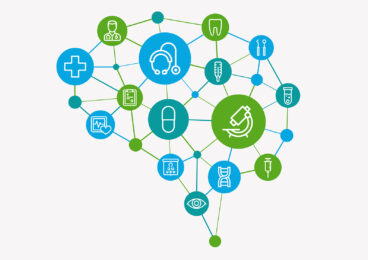
Curing Healthcare’s Software Development Ailment

With the UK spending 10 percent of their country’s income on healthcare, it’s easy to see why they are emphasizing the phrase “Prevention is better than [a] cure” at the core of their vision. Considering the already limited resources in addition to needing to cut costs, a focus on prevention enables healthcare providers to deliver better quality care to those who need it most. And these findings aren’t just restricted to the UK. They apply globally.
Fortunately, we live in an age in which technology enables an increasing level of preventative healthcare. Telehealth has been found to reduce emergency admissions by up to 20%, while AI is quickly improving efficiencies in a number of areas. Automating administrative tasks, for example, could save time and improve quality of care by freeing up healthcare providers’ time, while advances have also been made in the early diagnosis of breast cancer and heart conditions. Following suit, British Prime Minister Theresa May recently announced an initiative to deploy AI as a means of preventing over 20,000 cancer-related deaths by 2033.
Test for success, early and often
The saying ‘prevention is better than cure’ applies equally to software quality – especially with healthcare technology that impacts the wellbeing of lives. In testing the software that powers these advances in healthcare technology, early detection of bugs in software can have significant benefits in terms of quality and cost.
It’s well known that the later a defect is discovered, the more time-consuming and expensive it can be to treat. Indeed, it can take 150 times longer to resolve a defect found in the production stage than one found at the requirements stage. Consider this alongside the findings of an additional study, which showed that it is 60 to 100 times less expensive to fix defects identified during the requirements and design phases than after product release, and the argument for preventative measures is clear. To ensure the health of their applications, it is essential that test/QA teams find and resolve defects earlier in the development process when they are much easier to address. Some of the best success stories of this have come from test/QA teams that can implement BDD testing practices with the expertise needed to be agile and scale.
Time is money, and it matters
As testing delivers efficiency, the automation of that testing also improves the QA departments ability to identify and correct software defects. This benefit is magnified even further for healthcare providers. By automating test processes, and ‘shifting left’ to focus their testing earlier on in the SDLC, it’s possible for QA teams to reduce the time between releases, improve the quality of their software, and deliver new and upgraded features more quickly.
One example of success is Apexon’s work with a medical device manufacturer. By automating the customer’s critical application tests and receiving immediate and continuous feedback on new builds, they were able to save more than 300 hours, or 41 staff days, of test cycle time per month. Additionally, we’ve seen this approach reduce overall testing cycles from over two weeks to just a few days.
Not only can pre-emptive measures in healthcare SDLCs save time and money, but the end result means that it can save lives too. This is exponential more important in an increasingly competitive market where high-quality products must be delivered quicker than ever to save those very same lives. ‘Prevention is better than cure’ has been a fundamental tenet of healthcare providers for hundreds of years. It’s time now that it became a core philosophy of the testing community too.
To find out more about how Apexon can put test automation to work in your organization, fill out the form below.







